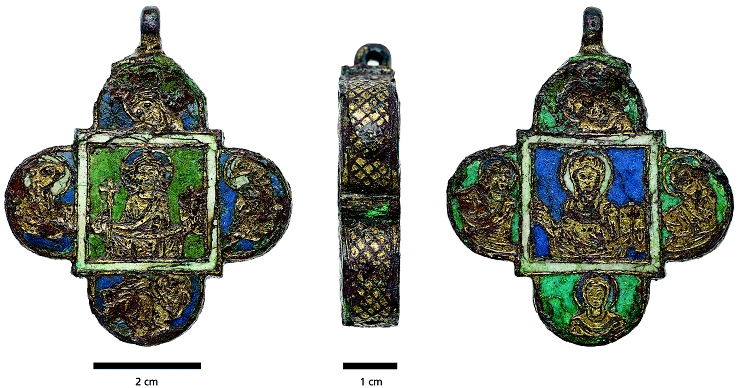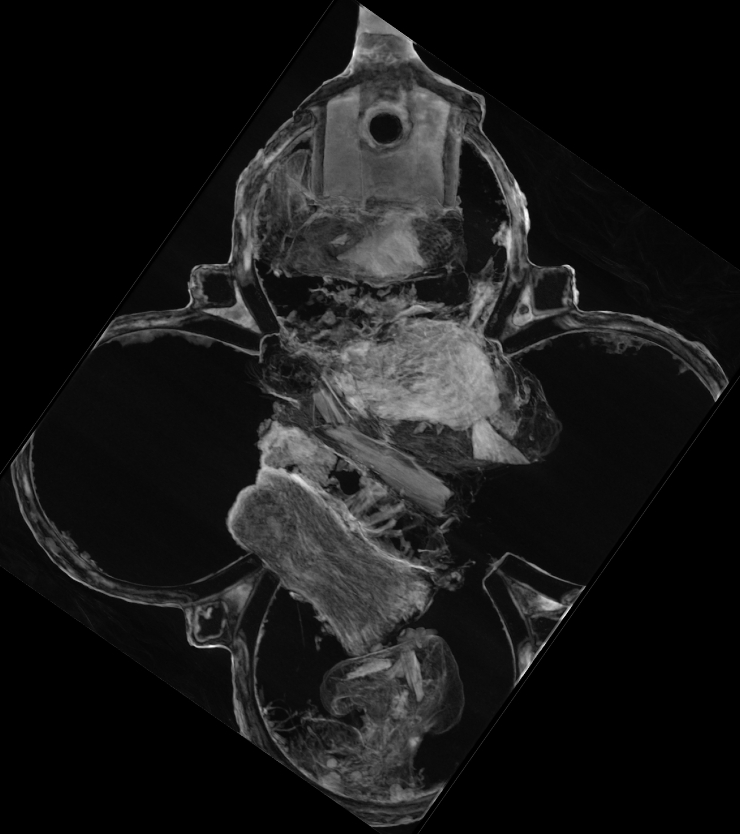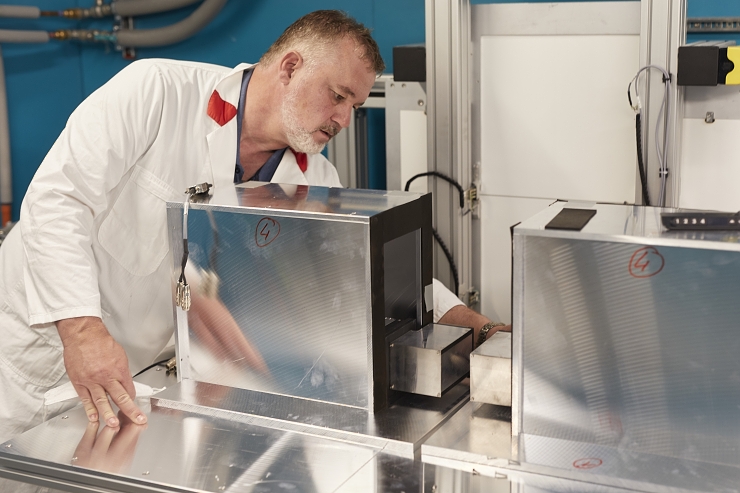Je to moc krásný předmět 👍 Jsem sa dočetl, že ty neutróny ,dokážou perfektně narušit strukturu všech materiálů zejména kovů. Tož teď nevím, jestli sa jim to časem nerozpadne ,tak či tak 🤔 ale asi to mají dobře promyšlené 😁
Neutron technology finds bones and textiles inside medieval reliquary
Categories: Nálezy nejenom s detektorem v západní Evropě
A very rare enamel pendant used as a relic box was discovered in a medieval waste pit in the Old Town of Mainz. Attempting to open it threatened irreversible damage. Experts therefore used neutron tomography to examine the contents of the box non-destructively and preserve its integrity for future generations.
The type is a Greek cross with rounded ends, with overall dimensions of 6 cm x 6 cm x 1 cm. It is made of gilded copper with enamel decoration depicting Jesus with the four evangelists in a square in the centre on one side and Mary with the four saints in rounded semicircular ends on the other side. The reliquary dates from the late 12th century and was made in a workshop in Hildesheim, Lower Saxony. So far, only three other reliquaries of this type are known.
The conservation work took 500 hours of labour, during which corrosion deposits were carefully removed. As the organic content of the pendant was not visible on the first X-ray images, the research continued under the direction of Dr. Burkhard Schillinger of the Technical University of Munich (TUM), who performed neutron tomography using the ANTARES instrument.
Inside were five small packets of linen and silk, each containing bone fragments, quite possibly relics of a saint or religious figure: "The non-destructive investigation using neutrons was particularly useful because we could not simply open the pendant and look inside. Centuries of corrosion have severely damaged the object as a whole and the lock mechanism in particular; opening the pendant would have meant destroying it beyond all hope of repair," says Matthias Heinzel, restorer at LEIZA.
"We cannot say for sure whether these bone fragments are those of a saint, and if so, which one. Similar caskets usually contain a strip of parchment with the name of a saint. In this case, however, unfortunately, we do not see any. As the archaeological research institute of the Leibniz Society, we consider it our duty to preserve the object in its historical authenticity as completely as possible for future generations and to usemodern possibilities of non-destructive research at the Technical University of Munich," said Mr Heinzel, adding that a fragment of silk cord was discovered in the loop of the pendant: "This is the first evidence that this kind of pendant could have been worn around the neck on a silk cord. Neutron tomography has made it possible to additionally measure the size of the threads and the separation of the strings of fabric inside the pendant."
The restored pendant is now on display as part of the exhibition AUREA MAGONTIA - Mainz in the Middle Ages at the State Museum in Mainz.
Roman Němec
Sources: thehistoryblog.com, tum.de

The reliquary contains packages with bone fragments and textiles

One of the images of the interior

Burkhard Schillinger
The article is included in categories:







